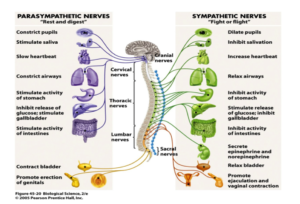Let’s Talk Stress: On You and On Kids
When you hear the word “stress,” what impact does it have on you? Do you notice your nerves begin to feel frazzled? Does your heart begin to beat faster? Or maybe it has little to no impact on you. Yet most of us are experiencing various levels of stress throughout our day that can often go unnoticed.
Stress can show up in our lives as tension held in our body, anxiety, depression, anger, headaches, back pain, a feeling of electrical currents running through us – there are numerous ways that it can impact our physical, mental and emotional states.
The American Psychological Association (APA) states that acute stress can manifest physically with the following signs and symptoms:
- Emotional distress — some combination of anger or irritability, anxiety and depression, the three stress emotions.
- Muscular problems including tension headache, back pain, jaw pain and the muscular tensions that lead to pulled muscles and tendon and ligament problems.
- Stomach, gut and bowel problems such as heartburn, acid stomach, flatulence, diarrhea, constipation and irritable bowel syndrome.
- Transient overarousal leads to elevation in blood pressure, rapid heartbeat, sweaty palms, heart palpitations, dizziness, migraine headaches, cold hands or feet, shortness of breath and chest pain.
Therefore, when you are stressed about the traffic, deadlines, relationship issues, or even world events, it is important to note that it impacts your physical health and wellness. More and more research is supporting the notion that the stress in our lives has physical implications. So why is this?
Think back about when you were in school and learned about the Autonomic Nervous Sytem (ANS). If you recall, the ANS includes the parasympathetic and the sympathetic. For most of us, we seem to get stuck in the parasympathetic or “fight or flight” mode. Yet, it is just as important to allow the body to connect with the sympathetic or “rest and digest.” This Biological Sciences graphic is excellent at showing the exact impact of both the parasympathetic and the sympathetic on our physical body. And for further clarity, tap here for a video explanation!
The Autonomic Nervous System

Stress and Our Kids:
Recent studies by the APA also indicate that our kids are experiencing more stress too. The APA found that each generation is experiencing more stress than the one before it. Therefore, the Millenials are experiencing more stress than that experienced by either the Xers or the Baby Boomer generations.
And from a recent APA survey, kids are reporting more stress than what is perceived by their parents. In one finding, the APA survey found that “nearly half (45 percent) of teens ages 13-17 said that they worried more this year, but only 28 percent of parents think their teen’s stress increased.” The kids reported that their stress appeared as headaches, difficulty sleeping or too much/too little eating.
Stress Reduction Recommendations:
As a parent, you can incorporate stress reduction techniques for you and your kids. For instance, you might wish to make it a family activity. The activities might include: 1) taking a class together on meditation, yoga or Qigong; 2) meditating together at home through an Itunes meditation; and/or 3) checking in with your child to gauge their stress level. If your child continues to express signs or symptoms of stress, you may wish to consider seeking professional help.
Learn more at the upcoming Four Directions Wellness week-long series on parent-child mindfulness and meditation techniques. “Like” Four Directions Wellness Facebook for the March 3 start of the parent-child videos.